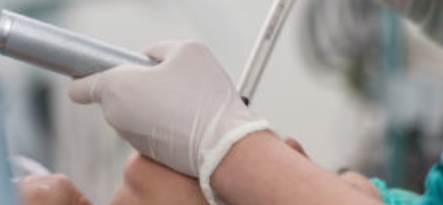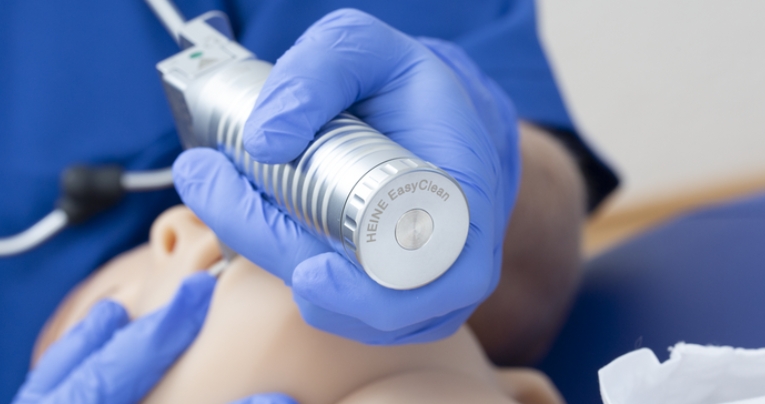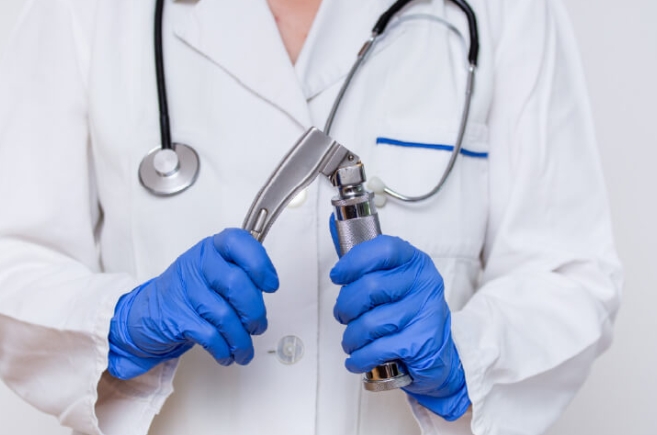Views: 222 Author: Lake Publish Time: 2025-11-12 Origin: Site








Content Menu
● Understanding Laryngoscope Components
● Immediate Post-Procedure Cleaning
>> Disassembly and Preparation
>> Mechanical Cleaning Techniques
>> Automated Washer-Disinfectors
● High-Level Disinfection and Sterilization
● Inspection and Quality Control
>> Handling and Transportation
● Documentation and Compliance
>> Record Keeping Requirements
>> Regulatory Standards and Guidelines
● FAQ
>> 1. What is the difference between cleaning and disinfecting laryngoscopes?
>> 2. Can laryngoscopes be sterilized using steam autoclaves?
>> 3. How often should laryngoscopes be inspected for damage or wear?
>> 4. What are the most commonly missed areas when cleaning laryngoscopes?
>> 5. How should laryngoscopes be stored after cleaning and disinfection?
Laryngoscopes represent essential medical devices used in airway management across various clinical settings, from emergency departments to operating rooms. Proper cleaning and maintenance of laryngoscopes constitutes a critical component of infection control protocols in healthcare facilities worldwide. The complex design of laryngoscopes, with their intricate components and electrical elements, presents unique challenges for effective reprocessing. This comprehensive guide addresses the proper cleaning procedures for laryngoscopes after use, encompassing both immediate bedside cleaning and thorough terminal reprocessing.
The importance of correctly cleaning laryngoscopes cannot be overstated, as improper processing can lead to device damage, reduced lifespan, and most critically, healthcare-associated infections. Laryngoscopes frequently encounter patient secretions, blood, and potentially infectious materials during intubation procedures, making their reprocessing a vital patient safety concern. Understanding the proper techniques for cleaning laryngoscopes ensures both device longevity and optimal patient outcomes, while complying with increasingly stringent regulatory standards for medical device reprocessing.

Before addressing cleaning procedures, it's essential to understand the various components of laryngoscopes that require attention during reprocessing. Traditional laryngoscopes consist of two main parts: the handle containing the power source and the blade that enters the patient's airway. Modern video laryngoscopes incorporate additional complex elements including cameras, light sources, and electronic connections. Each component of laryngoscopes presents specific cleaning challenges and requirements.
The blades of laryngoscopes typically feature crevices, hinges, and locking mechanisms that can trap organic material and present challenges for thorough cleaning. The handles of laryngoscopes, particularly reusable models, contain electrical components that must be protected from moisture during cleaning processes. Understanding these components is crucial for developing effective cleaning protocols for laryngoscopes that address all potential contamination points while preserving device functionality and integrity.
Immediate cleaning of laryngoscopes begins at the point of use following any intubation procedure. This initial step represents the first line of defense against contamination and device damage. Healthcare providers should promptly wipe laryngoscopes with a facility-approved disinfectant wipe to remove gross contamination immediately after use. This preliminary cleaning of laryngoscopes prevents drying of organic material on device surfaces, which can complicate subsequent cleaning steps.
During bedside cleaning of laryngoscopes, particular attention should be paid to the blade portion, which has direct patient contact. The locking mechanism and hinge areas of laryngoscopes require careful wiping to remove visible debris. Following this initial wipe, laryngoscopes should be placed in a designated container or transparent bag labeled as contaminated, following facility protocols for transport to the cleaning area. This immediate attention to laryngoscopes after use significantly enhances the effectiveness of subsequent reprocessing steps.
Proper preparation of laryngoscopes at the point of use facilitates effective reprocessing. When disassembling laryngoscopes, healthcare personnel should carefully separate the blade from the handle according to manufacturer instructions. For laryngoscopes with disposable components, these should be properly discarded in appropriate waste containers. Reusable components of laryngoscopes should be handled in a manner that minimizes potential for cross-contamination during transport to the reprocessing area.
During this preparation phase, laryngoscopes should be inspected for visible damage or malfunction. Blades of laryngoscopes should be examined for cracks, bends, or corrosion that might compromise both function and cleanability. Handles of laryngoscopes should be checked for battery leakage, casing damage, or electrical malfunctions. Identifying these issues early in the process ensures that damaged laryngoscopes are removed from circulation before reprocessing efforts are wasted on compromised devices.

Thorough manual cleaning represents the foundation of effective reprocessing for laryngoscopes. Before immersion in cleaning solutions, laryngoscopes must be completely disassembled according to manufacturer instructions. This typically involves separating the blade from the handle of laryngoscopes, and for more complex video laryngoscopes, may include removing additional components or protective covers. Proper disassembly of laryngoscopes ensures that all surfaces are accessible for cleaning.
Once disassembled, laryngoscopes should be immersed in a designated enzymatic detergent solution prepared according to manufacturer instructions. The solution should be at the recommended temperature and concentration to effectively break down organic material without damaging laryngoscopes. Components of laryngoscopes should be fully submerged and oriented to minimize air pockets that could shield contaminants from cleaning action. This soaking phase represents a critical step in preparing laryngoscopes for mechanical cleaning.
Following immersion, laryngoscopes require mechanical cleaning to remove adhered contaminants. Soft-bristled brushes specifically designed for laryngoscopes should be used to scrub all surfaces, with particular attention to crevices, hinges, and locking mechanisms. Brushes of appropriate size should be selected to effectively clean the various components of laryngoscopes without causing damage. The brushing action should be thorough yet gentle to preserve the integrity of laryngoscopes.
During mechanical cleaning of laryngoscopes, all surfaces should be methodically addressed using a consistent pattern to ensure no areas are missed. Lumens and channels in video laryngoscopes require specialized brushes and flushing techniques to ensure complete cleaning. After brushing, laryngoscopes should be thoroughly rinsed with clean, preferably filtered, water to remove all detergent residue and loosened contaminants. Proper rinsing of laryngoscopes is essential to prevent chemical interactions between cleaning agents and subsequent disinfectants.
For facilities handling high volumes of laryngoscopes, ultrasonic cleaning represents an effective method for removing contaminants from difficult-to-clean areas. The cavitation action in ultrasonic cleaners can reach intricate components of laryngoscopes that manual brushing might miss. When using ultrasonic cleaning for laryngoscopes, it's essential to follow manufacturer recommendations regarding solution compatibility, exposure time, and energy settings to prevent damage to delicate components.
Laryngoscopes placed in ultrasonic cleaners should be fully disassembled and arranged to ensure all surfaces are exposed to the cleaning action. The solution should be specifically formulated for medical devices and compatible with the materials used in laryngoscopes. Following ultrasonic cleaning, laryngoscopes must be thoroughly rinsed and inspected before proceeding to disinfection or sterilization. Regular maintenance and testing of ultrasonic cleaners ensure optimal performance when processing laryngoscopes.
Automated washer-disinfectors offer standardized reprocessing for laryngoscopes, reducing variability associated with manual cleaning. These systems provide consistent exposure to cleaning solutions, mechanical action, and rinsing cycles specifically programmed for medical devices like laryngoscopes. When using automated systems for laryngoscopes, it's crucial to use racks and trays designed specifically for these devices to ensure proper positioning and exposure to cleaning agents.
The programmed cycles for laryngoscopes in washer-disinfectors typically include phases for washing, rinsing, and thermal disinfection. Validation of these cycles for specific models of laryngoscopes ensures effective reprocessing without device damage. Regular monitoring and maintenance of automated reprocessing equipment used for laryngoscopes is essential for consistent results. These systems provide documentation capabilities that support compliance tracking for laryngoscopes reprocessing.
Following thorough cleaning, laryngoscopes require high-level disinfection to eliminate pathogenic microorganisms. The choice between high-level disinfection and sterilization for laryngoscopes depends on their intended use and institutional policies. High-level disinfection of laryngoscopes typically involves immersion in an EPA-registered chemical disinfectant with demonstrated efficacy against healthcare-associated pathogens.
When chemically disinfecting laryngoscopes, strict adherence to manufacturer instructions for both the devices and the disinfecting agents is essential. Key parameters including concentration, temperature, and immersion time must be carefully monitored and documented for each batch of laryngoscopes processed. After disinfection, laryngoscopes require thorough rinsing with sterile water to remove chemical residues, followed by drying in a controlled environment to prevent recontamination.
For laryngoscopes used in sterile fields or on immunocompromised patients, sterilization may be required. Low-temperature sterilization methods such as hydrogen peroxide plasma, ethylene oxide, or vaporized hydrogen peroxide are typically recommended for laryngoscopes due to their sensitivity to heat. These methods effectively sterilize laryngoscopes without damaging their electronic components or structural integrity.
When sterilizing laryngoscopes, proper packaging and loading of sterilization chambers ensure effective agent penetration and maintenance of sterility until use. Biological and chemical indicators should be used with each load containing laryngoscopes to verify sterilization conditions were met. Strict inventory rotation practices for sterilized laryngoscopes prevent outdated devices from entering clinical use, maintaining both sterility and device functionality.
Following reprocessing, every laryngoscopes must undergo meticulous visual inspection to verify cleaning efficacy and device integrity. Using adequate lighting and magnification if necessary, reprocessing personnel should examine all surfaces of laryngoscopes for residual soil, damage, or wear that might compromise function or cleanability. Particular attention should be paid to the lighting elements and hinges of laryngoscopes, where debris commonly accumulates.
During inspection of laryngoscopes, any visible residue, discoloration, or damage should prompt return to the cleaning process or removal from service. The visual inspection of laryngoscopes represents a critical quality control point that directly impacts patient safety. Documentation of inspection results for laryngoscopes provides traceability and supports quality improvement initiatives in reprocessing operations.
Beyond visual inspection, laryngoscopes require functional testing to ensure operational reliability. For traditional laryngoscopes, this includes verifying the lighting system functions properly with adequate brightness. Video laryngoscopes need additional testing of display systems, image quality, and connectivity features. Functional testing of laryngoscopes should simulate clinical use conditions to identify potential failures before devices are needed for patient care.
Battery-powered laryngoscopes require assessment of power sources and charging systems during functional testing. Documentation of functional testing results for laryngoscopes creates a maintenance history that supports predictive replacement strategies. Laryngoscopes failing functional tests should be removed from service and referred for repair or replacement according to facility protocols.
Correct storage of processed laryngoscopes preserves their cleanliness and functionality until next use. Laryngoscopes should be stored in clean, dry environments protected from dust, moisture, and extreme temperatures. Storage areas for laryngoscopes should be designed to prevent crushing, bending, or other physical damage that might compromise device integrity or performance.
The storage method for laryngoscopes should protect reprocessed devices from environmental contamination while allowing for adequate air circulation. Organized storage systems for laryngoscopes facilitate proper inventory rotation, ensuring older devices are used before newer ones. Clearly labeled storage locations for different types of laryngoscopes prevent confusion and streamline clinical access while maintaining the chain of custody for reprocessed devices.
Proper handling of cleaned laryngoscopes maintains their reprocessed state until point of use. Personnel should handle laryngoscopes with clean hands or gloves to prevent recontamination. Transportation of laryngoscopes within healthcare facilities should utilize covered containers or carts that protect devices from environmental contaminants during transit.
Emergency laryngoscopes stored in code carts or rapid response bags require special consideration regarding packaging and regular verification of cleanliness and function. Systems for tracking the location and status of laryngoscopes throughout the facility enhance equipment management and ensure availability of properly reprocessed devices when needed. Regular audits of handling practices for laryngoscopes identify opportunities for process improvement.
Comprehensive documentation for reprocessing laryngoscopes provides traceability and supports regulatory compliance. Records for laryngoscopes reprocessing should include cleaning and disinfection or sterilization parameters, lot numbers of chemicals used, and operator identification. This documentation for laryngoscopes creates an audit trail that demonstrates adherence to established protocols and manufacturer instructions.
Electronic tracking systems for laryngoscopes can automate much of this documentation, integrating with equipment management databases. Maintenance records for laryngoscopes, including repairs, part replacements, and performance issues, should be maintained alongside reprocessing documentation. This comprehensive approach to documenting the lifecycle of laryngoscopes supports quality assurance programs and regulatory readiness.
Reprocessing of laryngoscopes must comply with increasingly stringent regulatory standards from organizations including The Joint Commission, CDC, FDA, and AAMI. These standards provide frameworks for developing reprocessing protocols for laryngoscopes that ensure patient safety and device efficacy. Regular review of updated guidelines regarding laryngoscopes reprocessing ensures ongoing compliance with evolving standards.
Healthcare facilities should establish clear policies and procedures specific to reprocessing laryngoscopes based on device manufacturer instructions and regulatory requirements. Staff education programs for laryngoscopes reprocessing should be regularly updated to reflect current standards and best practices. Internal and external auditing of laryngoscopes reprocessing practices validates compliance and identifies improvement opportunities.
Proper cleaning and reprocessing of laryngoscopes represents a fundamental aspect of infection prevention and patient safety in healthcare settings. The comprehensive approach to cleaning laryngoscopes outlined in this guide emphasizes the importance of systematic protocols that address both immediate post-procedure processing and thorough terminal reprocessing. As laryngoscopes continue to evolve with technological advancements, particularly with the integration of video capabilities, reprocessing methods must adapt to ensure effective cleaning without compromising device functionality.
Healthcare facilities must prioritize adequate training, appropriate resources, and quality monitoring for laryngoscopes reprocessing to maintain both device performance and patient safety. The development and implementation of evidence-based protocols for cleaning laryngoscopes, coupled with ongoing staff education and compliance monitoring, ensures that these critical airway management devices remain safe, functional, and ready for clinical use. Through diligent attention to proper reprocessing techniques for laryngoscopes, healthcare providers contribute significantly to reducing healthcare-associated infections and optimizing patient outcomes during airway management procedures.

Cleaning and disinfecting laryngoscopes represent distinct but complementary processes in device reprocessing. Cleaning laryngoscopes refers to the physical removal of organic material and visible soil from device surfaces using detergent solutions and mechanical action. This process is essential for laryngoscopes as it reduces bioburden and prepares devices for subsequent disinfection. Disinfecting laryngoscopes involves using chemical agents or thermal processes to eliminate pathogenic microorganisms after cleaning. Both processes are necessary for proper reprocessing of laryngoscopes, with cleaning always preceding disinfection to ensure effectiveness.
Most modern laryngoscopes, particularly those with electronic components or plastic materials, cannot withstand the high temperatures and pressure of steam autoclaves. Traditional all-metal laryngoscopes might tolerate steam sterilization, but manufacturer instructions must be consulted for specific guidance regarding compatible sterilization methods for each model of laryngoscopes. Typically, low-temperature sterilization methods such as hydrogen peroxide plasma, ethylene oxide, or vaporized hydrogen peroxide are recommended for laryngoscopes to prevent damage to lighting elements, electronic components, and structural integrity. Always verify the manufacturer's sterilization recommendations for specific laryngoscopes before selecting a sterilization method.
Laryngoscopes should be visually inspected before and after each use, with more comprehensive functional testing conducted according to facility protocols, typically on a monthly basis or according to manufacturer recommendations. During inspection of laryngoscopes, personnel should check for cracks in plastic components, corrosion on metal surfaces, integrity of lighting systems, and proper functioning of locking mechanisms. Laryngoscopes showing signs of damage, wear, or malfunction should be immediately removed from service to prevent clinical complications and potential patient injury. Documentation of inspection results for laryngoscopes supports equipment management and replacement planning.
The most commonly missed areas when cleaning laryngoscopes include the locking mechanism and hinge areas where biological material can accumulate, the crevices around light sources where secretions can pool, and the internal channels of video laryngoscopes that require specialized cleaning approaches. The complex geometry of laryngoscopes blades, particularly Macintosh-style blades with their pronounced curvature, presents challenges for thorough cleaning. Additionally, the battery compartments and electrical contacts in handles of laryngoscopes are frequently overlooked during cleaning. Systematic cleaning protocols for laryngoscopes that address these challenging areas reduce the risk of residual contamination.
Properly reprocessed laryngoscopes should be stored in a manner that protects them from environmental contamination and physical damage. Laryngoscopes should be completely dry before storage to prevent microbial growth and corrosion. Storage areas for laryngoscopes should be clean, dry, and protected from dust and moisture, with adequate air circulation. Laryngoscopes should be arranged to prevent crushing, bending, or other physical stress that could compromise device integrity. Many facilities store laryngoscopes in protective cases or organized storage systems that maintain separation between clean and contaminated areas, with clear labeling to ensure proper inventory rotation.